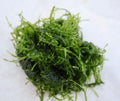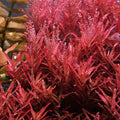Troubleshooting Common Issues in Aquariums
Aquarium enthusiasts often encounter various challenges while maintaining their underwater ecosystems. In this blog post, we'll delve into two common issues – excessive bubbles on the water surface and the presence of hair algae. Additionally, we'll explore why your fish might not be eating and how to troubleshoot this concern.
Excessive Bubbles
The presence of foam or bubbles on the water surface can be a cause for concern in aquariums. This phenomenon is often attributed to medications or an excess of ammonia in the water. Certain medications, like prozi quentinol and Mela fix, can alter water properties and lead to increased foam. Ammonia, a common culprit, can also result in frothy water. Regular observation and water testing are crucial to identify and address these issues promptly.
Hair Algae
If you notice hair algae in your aquarium, it may indicate an imbalance, particularly an excess of nutrients like iron. This type of algae tends to grow on plants and decorations, signaling a need for a closer look at your aquarium's nutrient levels. Overdosing on iron, using water with high iron content, or neglecting water parameters can contribute to the growth of hair algae. Regular testing and careful nutrient management can help prevent and resolve this issue.
Why Isn't My Fish Eating?
Fish not eating can be a worrisome situation for aquarium keepers. Several factors may contribute to this behavior, and it's essential to systematically troubleshoot the problem.
Expired or Spoiled Food
Pay attention to the freshness of the fish food. Over time, exposure to air can lead to spoilage, affecting its nutritional value.
Aggression Issues
Aggressive tank mates may intimidate certain fish, preventing them from getting their share of food. Observing the tank dynamics can help identify and address aggression problems.
Environmental Factors
Check water parameters such as temperature, pH, and ammonia levels. Ensure that the tank environment is suitable for your fish. Additionally, consider lighting conditions and shadows, as they may affect feeding behavior.
Maintaining a healthy aquarium requires regular observation, testing, and proactive troubleshooting. Whether it's addressing excessive bubbles, combating hair algae, or figuring out why your fish aren't eating, understanding the root causes is essential.
By staying vigilant and responsive to changes, you can create a thriving aquatic environment for your underwater companions. Remember, a well-balanced aquarium leads to happy and healthy fish.
















